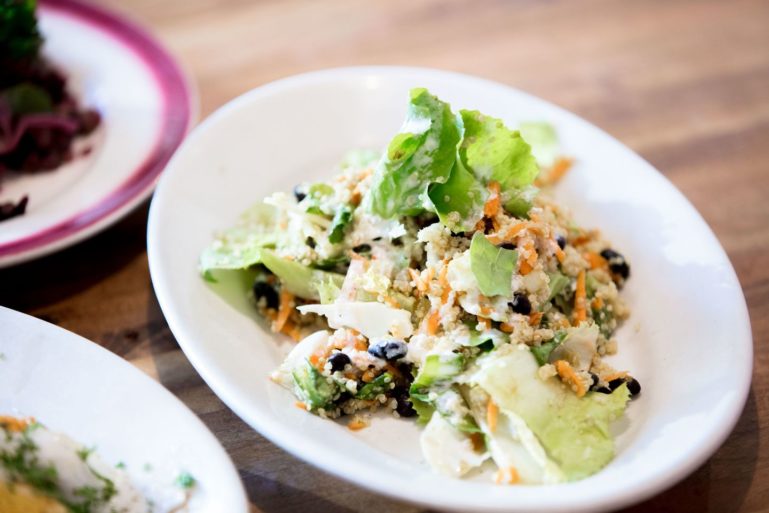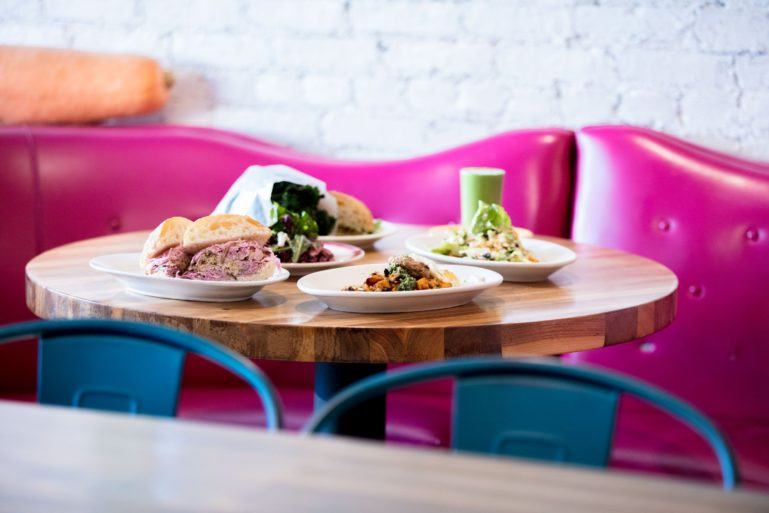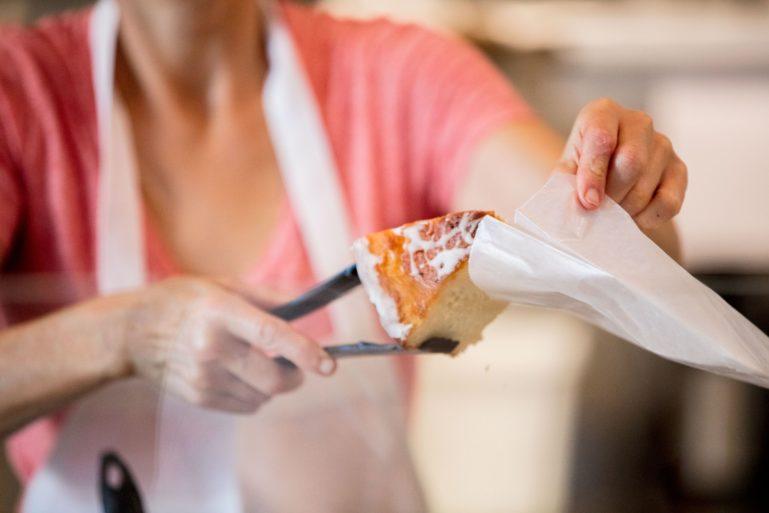
9 Food Safety Tips Every Restaurateur Must Follow
In the food and beverage industry, safety is paramount. A few mistakes can mean a poor reputation, an illness, and even a health department inspection — in short, everything necessary to see your restaurant shut down for good.
For starters, there are the four C’s of food safety that every restaurateur should know – Clean, Cook, Chill, and always avoid Cross-contamination. We’ll discuss these and a few more food safety tips along with some rules and regulations to keep your business protected, healthy, and thriving.
Hazards of Improper Food Safety Practices
First, let’s take a minute and define a few terms so that we’re all on the same screen. The term “food poisoning” is often used to describe an illness that comes from eating dirty, spoiled or tainted food. While food poisoning is certainly possible, foodborne infections are far more common.
Foodborne infection is a condition that arises from bacteria, viruses, or parasites from high-risk foods like undercooked or raw meat, which grow both within the food and inside the human body. Spoiled meat, food prepared with unwashed hands, for example, can lead to foodborne illness.
Symptoms vary based on cause and degree of contamination, but common effects include vomiting, stomach pain, nausea, headaches, cramps, and everyone’s favorite, diarrhea. Signs of infection typically arise within several hours of eating the infected product and can last days or even weeks, in extreme cases.
According to the Center for Disease Control, approximately 48 million Americans experience foodborne infections each year, and 3,000 deaths occur annually. Pregnant women and those younger than five and older than 65 are the most susceptible due to weaker immune systems.
A string of illnesses or deaths is the last thing any restaurant wants to perpetuate, making restaurant food safety measures crucial to your operations. Luckily, with attention to detail and strict internal protocols, it’s possible to drastically minimize any chance of foodborne illness in your facility.
Let’s get started, shall we.
1. The Clean Rule
Cleanliness is a major component of food safety and one of the four C’s of food safety rules. It’s also a great way to eliminate the one C you should always avoid, cross-contamination.
As you change tasks in the kitchen, be sure to wash your hands between jobs. Handwashing goes beyond a little water; the process should take no less than 20 seconds and involve hot soapy water, with antibacterial soap, and thorough drying. In other words, don’t wash your hands like your kids wash their hands – clean your hands like a doctor going into surgery but without going all the way up to your elbows.
Washing should always take place after:
- Using the bathroom
- Handling raw fish, raw meat or raw poultry
- Touching trash or dirty dishes
- Taking a smoke break
- Using your phone … while taking a smoke break
- Eating on your lunch or dinner break
- Sneezing, blowing your nose or coughing
- Touching animals – if you own one of those trendy dog-friendly cafes

2. The Clean Rule Sequel
Cleanliness doesn’t just stop with warm water and soap on your hands. In a restaurant, it’s essential for everything to be clean at all times. When it’s the height of dinner hour, employees are moving quickly around the kitchen, and orders are completed under pressure. It’s easy to cut corners to get things done, but no matter how busy you are, cleaning is always a priority.
Here are a few general rules to follow:
- Food should be cleared promptly. Dirty dishes and food residue should never come into contact with recently cooked food.
- Wipe down all counters throughout the day, removing old food particles or pooling liquid.
- Do dishes often, ensuring knives, plates, silverware and cooking utensils are always clean and sanitized.
- Break down and clean ovens, stoves, flat tops, grills, and hoods nightly.
- Clear prep areas and make sure everything in the walk-in is sealed correctly and free of residue.
- Empty and replace prep pans nightly.
SEE ALSO: 10 Things To Get Right When Opening A Restaurant
3. The Cook Rule
Monitoring temperature is critical when cooking, and cooking something under its suggested preparation temperature can create big problems. While some meats, like beef or lamb, can be served rare or, in the case of tartars, raw, others, like pork or chicken must always be cooked all the way through. When preparing foods, utilize a food thermometer to ensure all items meet the following internal temperature:
- 160°F: Any Ground meats such as beef, turkey, or chicken
- 165°F: Poultry, stuffed foods, casseroles and microwaved animal products
- 155°F: Sausage and hamburger
- 145°F: Eggs, pork, fish and beef
- 135°F: Vegetables that will be kept warm, and packaged and ready-to-eat foods like soup or hot dogs
4. The Chill Rule
It doesn’t take long for food to spoil. A few minutes too many sitting on the line, near the grill, or on a prep table can be all the time required to turn a once-suitable dish into a severe foodborne illness.
Instead of gambling on whether a food item will be okay after an undetermined period, abide by the two-hour rule. In general, perishable food or prepared food should only be left out, at room temperature, for no longer than two hours before putting any leftovers in the refrigerator. Any longer than that, the food starts slipping into the ‘danger zone’ of temperatures that are primed for harmful bacteria growth, 40 degrees Fahrenheit – 140 degrees Fahrenheit.
If you suspect meat, fish, poultry, salad or any other such item has been lingering out longer than two hours, discard it immediately. Basic food safety should take preeminence over saving a few dollars on food cost.
5. The Cross-Contamination Rule
For food safety, cooked food and raw food should never be stored in close proximity, including in the walk-in refrigerator. Bacteria from raw foods can easily contaminate cooked food, and, without proper procedures, bacteria can spread extremely quickly.
When storing both cooked and raw food in the same space, designate one area of your storage facility to raw food and another to cooked food, preferably using individual shelving units if possible. And remember always to keep raw food as close to the ground as possible to avoid dripping or leaking onto other food items.
Another way to ensure you don’t cross contaminate raw meat with ready-to-eat cold foods and hot foods is to make sure you have different cutting boards. As part of the kitchen staff or even as a bartender, you’re going to do a lot of cutting to create your fabulous dishes and cocktails.
Make sure you have separate cutting boards and utensils for the different types of food you need to cut. Cold food such as fruits and vegetables should have their own designated cutting board, as should raw meat and poultry products.
6. Keep It Covered
Whenever possible, gloves are a must in the kitchen. During a Saturday dinner rush, there’s not always time to wash up between handling different utensils and touching different ingredients, so the use of disposable gloves can save time and ensure all food preparation is up to code.
Gloves are especially important in food that requires hands-on contact, like preparing sandwiches or making a salad. While most cooks dislike gloves, it’s the law in some states, such as California.
Gloves are not designed to protect your hands from food; they are intended to protect food from your hands. Gloves can pick up germs too, so change them regularly, including after touching anything outside the immediate prep area, and when you change tasks in the kitchen.
7. Replace Disposable Tools
Just as gloves are disposable, so are the sponges used to wash dishes, the towels used to wipe down the line, and the rags soaked in a cleanser for washing tables. Whether you know it or not, these kinds of items can be a breeding ground for germs and bacteria, rendering your supposedly clean surfaces a lot dirtier than you realize.
Rather than continually reusing disposable or washable products, keep use to a minimum. Throw away sponges every few days, limit paper products to only one use, and wash rags each day. These simple steps can reduce the spread of germs in your kitchen, helping you to keep your premises as clean as possible.

8. Focus on Health
In every industry, going to work when you are sick is discouraged. However, staying home when you’re ill is even more critical in the foodservice industry. Cooks, servers, bussers, bartenders, managers, cashiers, and even dishwashers should steer clear of the kitchen, and any restaurant surfaces when carrying any known contagious disease that may result in the spread of germs.
More specifically, food service workers should never be in contact with food under the following circumstances:
- Presence of diarrhea or vomiting
- Confirmed diagnosis of infections that can be transmitted through food, like E. coli, Hepatitis A, Salmonella, or Shigella
- Any infected wounds or wounds of any kind that cannot be covered
- Continued sneezing, congestion, coughing or a runny nose
- The flu, although not known to be spread through food, can be spread quickly through contaminated surfaces. You don’t want your customer catching the flu and thinking it’s something they ate at your restaurant or bar.
9. Employee Behavior Matters
In a restaurant, it’s relatively easy to disregard the rules, especially after a long day. Soup pans don’t always get changed regularly, fresh condiments are mixed in with old condiments, and hair occasionally falls into an open container. These kinds of incidents are, of course, unacceptable.
Little mistakes are inevitable, but reinforcing employee behaviors can help avoid recklessness or just plain negligence.
- All hair should be pulled back or otherwise restrained. Cooks and all kitchen staff are required to wear hair nets. Facial hair like beards and mustaches must also be covered.
- Fingernails must be short to avoid getting food caught underneath them.
- Jewelry can carry germs, so back-of-house and front-of-house staff should leave bracelets, earrings, watches, and necklaces at home.
Bottom line, a dirty restaurant can cause plenty of problems, from poor quality to increased risk of foodborne illness. By adhering to the proper procedures and food safety rules and regulations in your restaurant or bar, it’s possible to prevent issues before they occur, keeping your diners as healthy and happy — and eager to return! — as possible.
Want to try ShopKeep for yourself?
Just answer a few easy questions.
Need help finding the right point of sale?
Just complete the form. We’ll call you right back to explain how ShopKeep can work for you.
Hit the ground running.Sprinting, in fact!
Read our free, comprehensive guide, Small Business 101, to learn all you need to know about starting a thriving business.

